Top 15 Foods of the Future
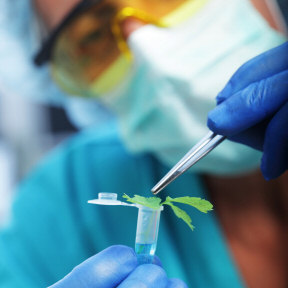 There's
no ritual more human than gathering around a table with family or friends to
share a meal. The need to eat has been part of our lives from the very
beginning, and it is a source of great pleasure and creativity as
well as a basic requirement of life. Within the common need to
grow, prepare, cook, and eat food there has been a vast array of different
choices and possibilities. Different foods developed in distinct areas across
the planet, and so cultures throughout time have made up their own forms of
local cuisine, using the plants, animals, and spices on hand. Modern
globalization has spread these cuisines far and wide, enabling further
development and creativity. Various kinds of "fusion" cuisine are becoming more
popular, and the home cook can experiment with continent-spanning dishes. The
trends in what people eat keep changing, and in the not-so-distant future many
of our diets may include ingredients that are hardly imaginable now. Science is
partnering with agriculture, business with chefs, and the results may surprise,
shock, or delight us. Here are a few ideas about what we may soon be eating. There's
no ritual more human than gathering around a table with family or friends to
share a meal. The need to eat has been part of our lives from the very
beginning, and it is a source of great pleasure and creativity as
well as a basic requirement of life. Within the common need to
grow, prepare, cook, and eat food there has been a vast array of different
choices and possibilities. Different foods developed in distinct areas across
the planet, and so cultures throughout time have made up their own forms of
local cuisine, using the plants, animals, and spices on hand. Modern
globalization has spread these cuisines far and wide, enabling further
development and creativity. Various kinds of "fusion" cuisine are becoming more
popular, and the home cook can experiment with continent-spanning dishes. The
trends in what people eat keep changing, and in the not-so-distant future many
of our diets may include ingredients that are hardly imaginable now. Science is
partnering with agriculture, business with chefs, and the results may surprise,
shock, or delight us. Here are a few ideas about what we may soon be eating.
15) Soylent
No, it's not the stuff out of an old science-fiction movie, and (thankfully)
it's not green. But a nutrient powder called Soylent is in development by Rob
Rhinehart, a software engineer by trade who is interested in developing
healthier, processed foods. His Soylent combines carbohydrates, proteins, fats,
vitamins and minerals into one nutrient compound. In other words Soylent
contains everything required for an ordinary,
healthy diet without the trouble of preparing and eating ordinary, healthy food.
This future food is more than just a convenient compound. Rhinehart believes
that it could be a way to feed the hungry in areas of famine or desperate
poverty, places where people die from starvation every day.

Soylent may be one of the first food products relying on crowd-sourcing to
reach market. As of July, 2013, Rhinehart raised nearly $800,000 to bring his
powdered food-substitute to market. It seems that he's not the only one who
thinks that food can be improved upon by eliminating most of the traditional
forms and distilling them down into the bare essential compounds. Rhinehart says
that his product is safe to live on exclusively, eating no other foods. No
independent studies have been undertaken to prove the product's safety, and it
may be better to use it as a supplement to a regular diet.
14) Sonically-Enhanced Foods
This category is not entirely about new foods, but about new ways of
enhancing the experience of eating food. The influence of appearance and smells
on what and how we eat have been well-researched, but the connections between
sound and taste are only now being studied. Oxford University scientists are
discovering that particular tones can alter our perception of flavors, making
foods taste more sweet or bitter. It's possible that hearing certain sounds, say
by adjusting elements of background music played in restaurants, could change
your experience of eating food. It's also possible that ingredients could be
adjusted to make dishes more healthy without affecting their taste, with sound
helping to alter our perception.

For example, playing tones to enhance your
sensation of sweetness might mean that less sugar is needed in a dessert. UK
chef Heston Blumenthal has experimented with sound by creating a seafood dish
accompanied by an iPod playing seaside sounds, and Heston reports that customers
believe the food tastes fresher. Companies are also experimenting with their
packaging, such as potato chip companies using materials which sound crunchier,
giving customers the sense that the contents are fresher and more crunchy too.
Some appliance companies are even studying the hum that refrigerators make,
looking for ways to create a pleasant tone to make people think the food inside
is fresher.
13) Insects
Yes, you read that right. With the global demand for meat racing ahead of
production, it is possible that in the future meat will become a luxury item,
too scarce and therefore too expensive to eat with every meal. For cultures that
have become accustomed to cheap meat being readily available, it's going to take
some serious getting used to. Fruits and vegetables will become a larger part of
meals, but alternative sources of protein are also going to become more
important. This includes varieties of edible bugs that will soon become as
popular as having say beef for a main course.
Grasshopper Salad
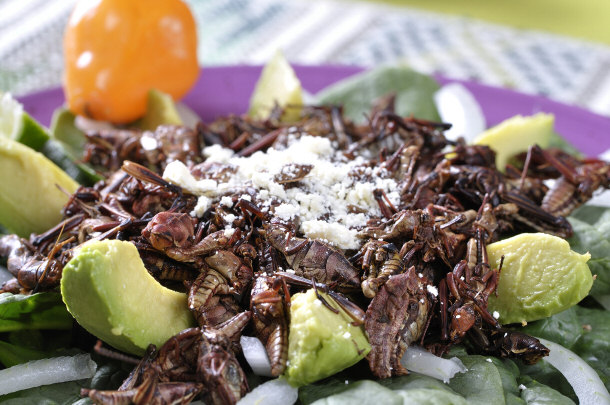
Strange as it sounds to American ears, insects are already part of ordinary
diets in large swathes of the world. Locusts and caterpillars are eaten in some
parts of Africa. Crickets are gobbled up in Thailand. And in Japan, wasps are
actually considered a delicacy. Researchers have determined that insects provide
as much nutritional value as more familiar meats, and are a fine source of
protein. But in order to become acceptable to North Americans and Europeans who
have no functional history of eating bugs, a serious image overhaul is going to
be necessary. At least there'll be variety if this "new" food source catches on.
It is estimated that there are 1,400 species of insects that can be eaten by humans.
12) Cultured Meat
This sounds a little better than meat from insects, but it is still going to be
a strange one to get used to for many people. Scientists in the Netherlands have
recently grown the first successful in-vitro meat, or meat grown from a
test-tube, not a live animal. By culturing stem cells from cows, they were able
to grow strips of muscle tissue, which is essentially the beef people are
familiar with eating. This area of research was first explored by NASA, who was
looking for sources of food that astronauts could eat (and maybe grow) in space.
Now the focus is on finding more sustainable ways of producing meat to satisfy
the world's growing demand. Industrial meat production is one of the leading
global sources of greenhouse gasses, and also a large strain on both water and
energy use. Growing our burgers and steaks in labs could be much more
environmentally friendly, taking a fraction of the land and resources that
modern industrial cattle farming requires.
Divided Cell - In Vitro Engineering

This is a very new area of science, and it is impossible to tell how such
meat products are eventually going to be developed or marketed. Lab-grown meat may
not look the same as meat from slaughtered animals, though a goal of the
research team working on it is ultimately to develop cultured meat which is
indistinguishable from meat from any other source. Time will tell if they
succeed.
11) MREs
They're not just for the military anymore. MREs, or Meals-Ready-to-Eat, are
becoming commercially available to the general public. These are different from
the more familiar TV-dinner, which usually needs to be kept in the freezer.
These are complete packaged meals that require no refrigeration, and therefore
can go just about anywhere and be eaten just about any time. They don't even
need cooking utensils, though that is a possibility if you want to feel more
like you are actually preparing something. MREs generally contain a special
no-heat-required cooking bag which heats the food inside by itself, with the
simple addition of water. The bottom of these bags contains a combination of
powdered magnesium, powdered iron, and salt. When water hits this combination,
the resulting chemical reaction produces copious amounts of heat, plenty to cook
a single meal.
Examples of MREs

By
Muttley (Self-Work) [CC-BY-SA-3.0], via Wikimedia
Commons
MREs may be used by a variety of people beyond the original intention of only
military personnel eating them. Backpacking enthusiasts will love the
convenience of carrying prepared meals along with them with no need to haul
heavy cooking pots and utensils. They make for a handy addition to survival
supplies, for anyone who is concerned about being ready for any emergency. And
for some folks who simply don't have the time or inclination to cook their own
meals, having a hot meal ready to hand may be an attractive choice. Just add
water, and dinner's ready!
10) GMOs
Genetically-modified foods are getting a lot of press, and not all of it is
good. It is still a new area of research and development, and there are setbacks
along with the successes. But the promise of GMOs is that foods can be made
healthier and easier to produce in the quantities that are going to be necessary
in order to sustain fast-growing populations. If crops can be made more
resistant to outbreaks of common pests, or if they can survive severe weather
conditions, it will mean that more crops grow to harvest successfully and
therefore more food is produced.
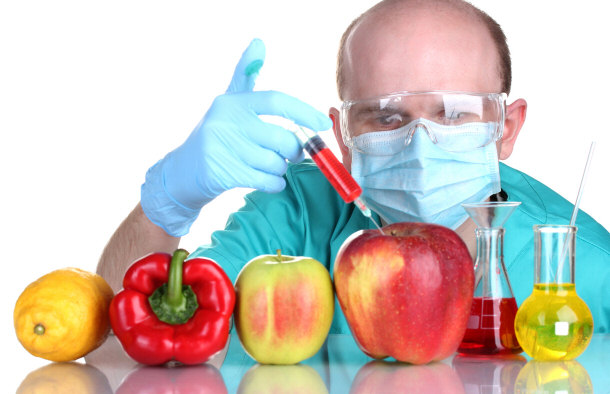
Researchers are also working on making staple
crops more nutritious, adjusting the composition of plants to include more vital
nutrients. One of the stand-outs in this field so far is "golden rice," a rice
variant which was engineered to include beta carotene. This gives the rice a
bright yellow color. More importantly, it gives this rice strain the potential
to relieve vitamin A deficiency in populations where it is common. This
deficiency can result in death or blindness, and children and pregnant women are
at highest risk. Giving these populations a reliable source of beta carotene via
genetically-engineered rice may prevent hundreds of thousands of deaths
annually.
9) 3D Pizza
Here's an idea straight out of science fiction. NASA has recently funded a
project which intends to develop a 3D food printer, capable of making pizzas or
other foods in space. 3D printing technology is already in use to make a wide
range of products (though no edible ones as yet). It uses a digital model of a
three-dimensional object to create that object in real life, using an additive
process which builds up the object a very thin layer of material at a time. The types of
materials used are most often metal or some form of plastic. The idea behind the
NASA project is to extrude the building blocks of food, using 3D printing
technology to build them up into finished food products.
Pizza From a Printer - Food Replicator
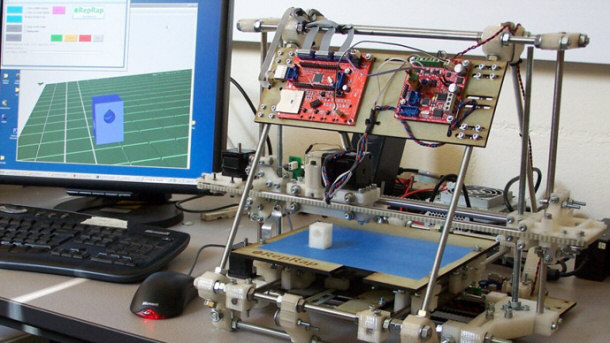
According to Anjan Contractor, the engineer who is working on the project,
the various carbohydrates, proteins, and nutrients are extracted from foods and
turned into powder by dehydration and other processes. In such form it is
projected to last for years, even decades. Food powders can thus be taken into
space, fed into the 3D food printer, and turned into food for astronauts to eat
in long-term space exploration missions.
8) Algae and Seaweed
Eating seafood is a regular occurrence for many Americans. However, when you
think of seafood you probably think of food from animals: fish, crabs, lobsters,
shrimp, and the like. In the future, the seafood you eat may be based on aquatic
plants, namely algae and seaweed. Again, other parts of the world are leading
the way with Asia leading the way. There are enormous algae farms in Japan and other Asian countries,
where algae and seaweed have long been considered a staple food. Worldwide, there are
10,000 identified types of seaweed, almost 150 of which are already known to be
safe for human and animal consumption.
Fresh Seaweed Salad
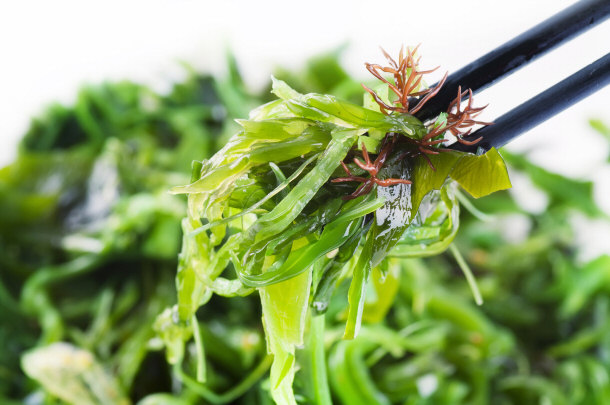
Because these potential crops grow in the sea, there is vastly more area
suited to producing them than land-based crops. With arable land and water
resources in ever shorter supply, being able to grow edible crops in the seas
could be a huge benefit for feeding expanding world populations. Seaweed and
algae also grow much faster than land-based crops. It's possible that these
plants will be quietly introduced into products you are more familiar with,
taking the place of other ingredients. Food scientists have experimented with
replacing salt and other additives in processed foods with seaweed granules,
reducing the amount of sodium in such products. With salt linked to a number of
chronic diseases, such products could be beneficial in multiple ways.
7) Cobia
There are familiar types of commercially-available fish, such as cod,
halibut, and salmon. Then there are relative newcomers, like tilapia. One fish
which is rarely known today, but may become very familiar in the near future is
the cobia. The reason fish like tilapia were unknown until recently and why
cobia is not yet familiar at all, is that it takes time to develop successful
methods of growing different fish commercially on fish farms. In the wild, the
cobia is a solitary fish, only gathering at breeding times.
Cobia On Ice
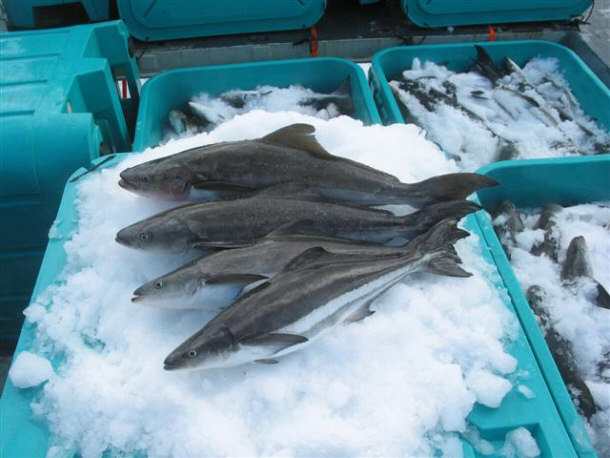
This does not make
it an obvious candidate for farming. But it turns out that cobia adapt well to
captivity, once the best methods of farming them domestically were worked out.
The cobia is a fast-growing fish, maturing six times as fast as salmon. Its
flesh is white and firm, and has a neutral taste. This makes it a good candidate
for larger commercial production, to fulfill various product needs for a
light-tasting white fish.
6) Purslane
Purslane is a plant with paddle-shaped leaves that are crunchy and mild-tasting.
It is a slightly mucilaginous plant, which means it can also be a little chewy,
like okra. It can be substituted for spinach in a lot of recipes, and actually
packs a serious nutritional punch. It has six times as much vitamin A as spinach
does, and seven times as much beta carotene as carrots. It also beats every
other leafy plant in its omega-3 levels. Various ancient cultures included it in
their cuisines, including the Americas where it grows in warm,
temperate regions. In Mexico it is still eaten as a comfort food, added to
omelets, rolled in tortillas, or added to stews.
Purslane Plant

Ton Rulkens [CC-BY-SA-2.0], via Wikimedia Commons
So why are modern American salad-eaters unaware of this leafy veggie?
Actually, it is considered a mere weed by most farmers and lawn-growers, called
duckweed or hogweed. It gets pushed aside for the sake of grassy lawns, in favor
of more familiar vegetables in other farm crops. But it seems that it may soon
be taking its rightful place in the sunshine, and also on dinner plates. Try
tossing it in salads where you would use spinach, or sauté it with a little
olive oil and sea salt.
5) "Meatless" Meat
Once again, this is not an entirely unknown category. Tofu, the traditional
foodstuff which is made from soy and widely used in Asian cuisines, is the most
familiar example. But for people accustomed to eating meat and unfamiliar with
cuisines where they are common, sometimes tofu and other meatless products high
in protein are derided for not being "the real thing." However, more and more of
these products are being developed, and they may take up a higher percentage of
global diets as meat becomes more expensive. Even those who are
fervent carnivores are starting to see the appeal of meat alternatives. It is well-known to those who use tofu already that it is
easily flavored by other foods and spices, and is also delicious if it is smoked.
Tofu, Spinach and Sesame Stir Fry
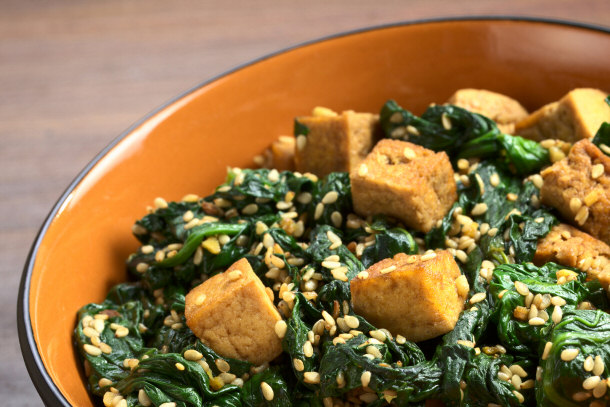
Soya meat is also produced from soybeans, but a different process is used
than in making tofu. The resultant product has a texture which is very similar
to meat, and it is also very high in protein. Seitan is produced from wheat
proteins, and is a cost-effective, simple raw material for producing vegetarian
sausages and hamburgers. It may be expanded into a greater range of meatless
products in the future. Tempeh is a traditional food of Indonesia, produced by
fermentation of cooked soybeans. It does not have a meat-like texture but
contains B vitamins and is high in protein. Other meatless, protein-based foods
are in development for use in processed foods and also as direct substitutes for
meat.
4) Purple Vegetables
Not only purple, but vegetables in all shades – just not the ones you'd expect.
If you think that all carrots are orange, all potatoes are white, and all
tomatoes are red, think again. The familiar types and colors are brought to us
by commercial food production which specializes in producing large numbers of
the same types of vegetables. The selection is partly determined by what grows
well in industrial conditions, and partly by what is marketable, which sometimes
means what is already familiar. But there is a much wider range of colors
available in many vegetables than the ones most often seen on grocery store
shelves. Growers are starting to make more of these varieties available.
Carrots, for instance, grow in white, red, and purple varieties as well as the
common orange. Purple potatoes have been grown for thousands of years in the
Andes of South America, and are finally starting to be known in North America.
Cauliflower can be found in purple, green, and bright orange.
Purple, Yellow, and Traditional Orange Carrots
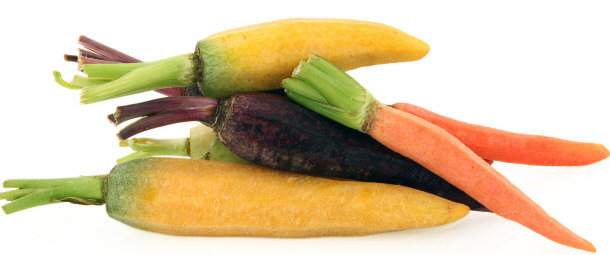
The colors of vegetables give strong clues to the nutrition packed inside.
Orange, for example, is often a marker of high levels of beta-carotene. So there
are health reasons along with fashion reasons to choose lots of color in your
vegetables. Eat a broad range of colors, and you'll get a broad range of
nutrition along with them.
3) Aronia Berries
It seems like there's a regular cycle of "super-food" discovery. One of the
next ones to hit the global stage may be the North American aronia berry, also
known as the chokeberry. It grows naturally in woodlands in swamps, and can be found
in red, purple, and dark purple varieties. The darkest purple berries are now
starting to be cultivated. They are a much deeper color than blueberries,
another North American native berry, and that color is getting the attention of
researchers. Purple in fruits signifies the presence of a particular type of
antioxidants, called anthocyanins. Anthocyanins have strong protective
properties for cells and are also anti-inflammatory in nature. With so many
chronic diseases having runaway inflammation at their source, anthocyanins and
aronia berries may become an important piece of the puzzle for helping people to
live more healthy lives. Aronia berries also include anti-bacterial, anti-viral,
and anti-diabetic compounds, along with a few natural cancer-fighting agents.
Some of these compounds also fight Crohn's disease and herpes, as well as
inhibiting HIV. This one small berry is a disease-fighting powerhouse!
Black Aronia Berry (Black Chokeberry)
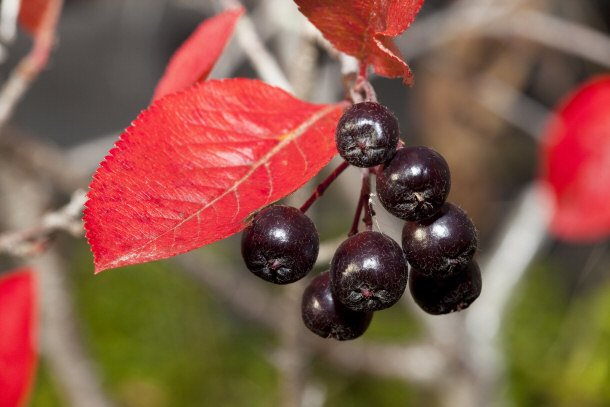
Aronia berries are already commercially cultivated in Russia and other parts
of Europe, and North American farmers are starting to develop them as well. With
so many benefits already known, a wider array of products made from aronia
berries are likely to appear soon on store shelves.
2) Chia Seeds
We bet you didn't see this one coming. Many people only know of chia seeds as
the things you spread on those corny pottery heads to give them a bushy green
hairdo. It turns out that a better use of those seeds is to eat them. Chia seeds
are actually ancient, and were cultivated by the Aztecs. Mexico and Bolivia are still the
primary producers of these tiny seeds, which are actually full of antioxidants,
protein, and omega-3 fatty acids. They are also high in dietary fiber, vital for
maintaining good digestive health. One of the odder-sounding properties of chia
seeds is their ability to absorb water. When ingested, chia seeds absorb up to
10 times their own weight in water, which helps you to feel full much more
quickly than you would otherwise. This can slow down calorie absorption, and it
may help athletes to avoid dehydration by providing a slow-releasing water store
inside the body.
Raspberry Juice with Chia Seeds Mixed In
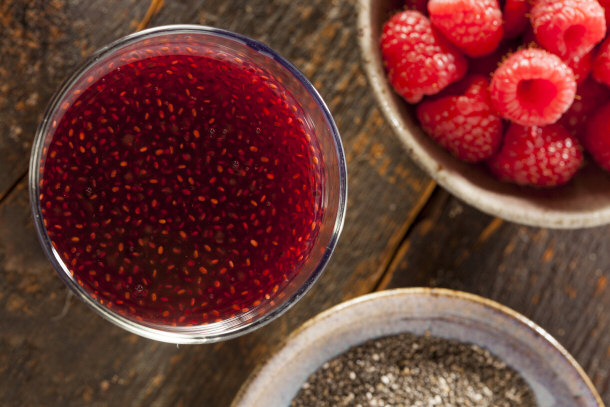
Chia seeds are getting added to numerous products. Cereals, snacks, and fruit
drinks are starting to include chia seeds in different forms. You can buy them
yourself to add to cereal, yogurt, or to baked goods, and get some of the
nutritional punch of those tiny seeds. Purchasing a pottery head to go along
with them is definitely not required.
1) Fruits and Vegetables
Okay, so this one is cheating a little. These foods are timeless and are not
going anywhere. Even with the changing fad diets and strange changing diet
desires of humans, fruits and vegetables will always be a part of human beings'
diets. They are currently foods that dominate the present, and will continue to be foods of the future for
generations to come. Nutritional science confirms the old facts, diets high in fresh
fruits and vegetables are healthy diets. These foods can provide all the
nutrition needed on a daily basis, and come in such a wide variety that you can
explore them for years, never tiring of the possibilities.
Fresh Fruits and Vegetables
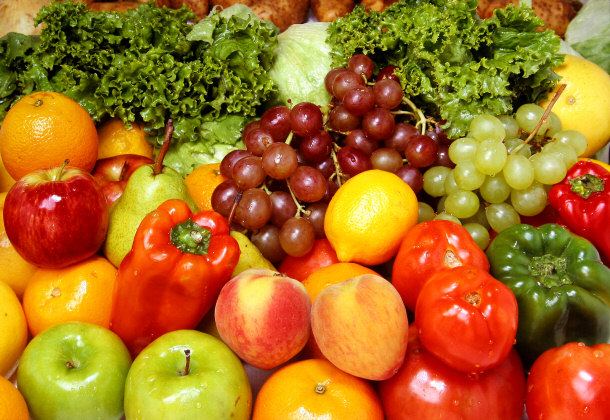
Part of the future of fruits and vegetables is that new kinds are spreading
around the world. This gives us a chance to mix and match, and try food
combinations that would not have been possible a hundred years ago. You can try a basic
vegetable dish from Japan tonight, Thailand tomorrow, India the next, and
continue straight across the globe one meal at a time. Add a new vegetable to one of your familiar
dishes for a new flavor twist. Try some unfamiliar berries on your dessert. No
matter where you start, you can make new fruits and vegetables part of your food
future and enjoy an endless set of delicious choices.
Conclusion
Modern food science doesn't remove our human need to eat, and it has not done
anything to change the nutrients our bodies require. Bit by bit, researchers
study those requirements and look for new ways to fulfill our old passions and
desires for great food. The foods of the future are going to have a lot in
common with the foods of today. They may come in unfamiliar forms, and new
flavors may take some
getting used to. They may combine the work of labs, farms, and fisheries in ways
human beings have never dreamt of putting food flavors together. It is certain that our future contains food, in lots of
forms and flavors, and new possibilities are opening to expand our food
resources and choices.
General Food
15 Little Known Facts About McDonald’s
15 Surprising Facts About the History of Fast Food
15 Fascinating Facts about Mushrooms
Top 10 Must-Try Foods of France
Top 15 Foods of the Future
15 Fascinating Facts in the World of Cheese
15 Little Known Facts in the World of Cotton Candy
15 Interesting Facts About Burgers
19 Ridiculous Food Challenges Around the World
15 Unusual Things People Around the World Eat
10 Enthralling Facts about the World of Gourmet |